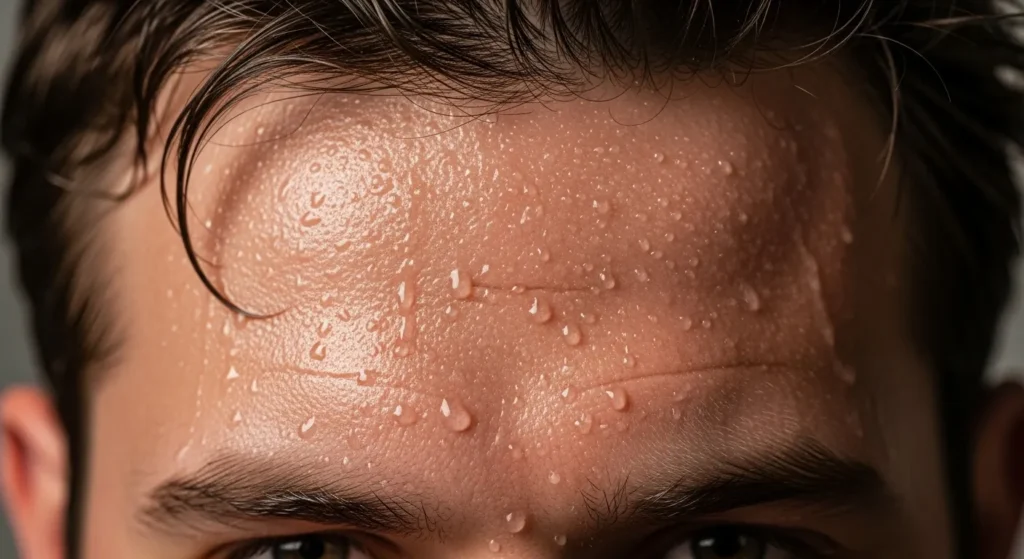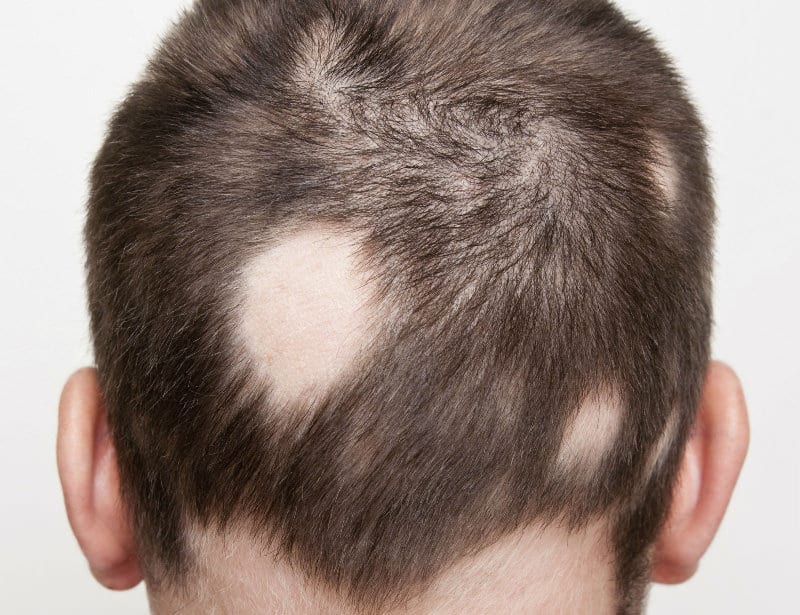Are you wondering if Can Sweat Cause Hair Loss, especially after intense workouts or during hot, humid days? You’re not alone. Many people notice increased shedding after sweating and worry about its long-term effects.
This article breaks down the truth about sweat, its impact on hair and scalp health, and what science actually says. You’ll also discover expert tips, recovery timelines, and effective solutions—especially if you’ve had a hair transplant. Whether you’re active, concerned about scalp health, or recovering from surgery, this guide has the answers you need.
Understanding the Link Between Sweat and Hair Loss

Sweat itself is a natural cooling mechanism. It contains water, sodium, potassium, lactic acid, and urea. When we sweat on our scalp, especially during workouts or in high heat, that sweat mixes with sebum (natural oil) and environmental debris.
Here’s how sweat can indirectly impact your hair:
- Clogged follicles: Excessive buildup can block hair follicles, leading to inflammation and poor scalp health.
- Scalp irritation: Salt and acid in sweat can irritate the scalp, especially if not washed off properly.
- Infections: A warm, moist scalp environment is perfect for fungal and bacterial growth.
Expert insight: According to Dr. Rana Irfan (ABHRS), “Sweat doesn’t directly cause hair loss, but when not managed well, it can lead to scalp conditions that contribute to shedding.”
What Science and Experts Say
Studies don’t show a direct link between sweat and hair loss, but there’s consensus that poor scalp hygiene after heavy sweating may lead to secondary issues like:
- Folliculitis (inflammation of hair follicles)
- Seborrheic dermatitis
- Telogen effluvium triggered by stress or scalp imbalance
Medical Perspective:
- Pro: Sweat contains minerals and toxins that can cause irritation if left unwashed.
- Con: There’s no evidence that sweat damages hair shafts or follicles directly.
Common Sweat-Related Risk Factors
Several factors increase the likelihood that sweat could contribute to hair loss:
- Salt & Lactic Acid Buildup: Salt can dry out the scalp, while lactic acid may alter pH balance, weakening follicles.
- Bacterial & Fungal Growth: Gym-goers often face issues like ringworm or folliculitis from shared equipment or headwear.
- Stress-Induced Sweating: Chronic stress triggers both excess sweating and telogen effluvium, a condition where hair prematurely enters the shedding phase.
- Tight Headwear: Constant friction from helmets or sweatbands traps moisture and adds traction stress to roots.
Pro Tip: If your scalp feels itchy, flaky, or sore after workouts, sweat might be contributing to your hair issues.
How to Tell if Sweat Is Causing Your Hair Problems
Here are signs that sweat might be negatively affecting your scalp:
- Increased hair shedding after exercise
- Itchy or flaky scalp
- Redness or bumps around follicles
- Persistent odor even after washing
Simple DIY Check:
- Check your pillowcase for excessive hair fall after a sweaty day.
- Use a mirror or phone camera to inspect scalp redness or buildup.
- Track shedding days — do they follow intense physical activity?
Preventive & Remedial Measures
Sweat doesn’t have to be the enemy. Here’s how to protect your scalp and hair:
After Sweating:
- Rinse or wash your hair within 1–2 hours post-exercise
- Use a mild, sulfate-free shampoo or scalp cleanser
- Apply a soothing leave-in conditioner or scalp serum
Before Activity:
- Wear sweat-wicking headbands or breathable caps
- Keep your hair tied loosely to reduce friction
- Apply a light protective oil if you plan to sweat heavily
Weekly Care:
- Use clarifying shampoos once a week to remove buildup
- Gently exfoliate scalp using scalp brushes or salicylic acid shampoos
Internal Support:
- Stay hydrated
- Maintain a protein-rich, anti-inflammatory diet
Special Considerations: Post‑Hair Transplant & Recovery
After a hair transplant, sweat can interfere with healing. Here’s what you need to know:
- Why It’s Risky: Sweat contains salt, which can irritate grafts and delay healing. It also increases the risk of infection.
- What to Avoid: Strenuous workouts, saunas, and hot showers for at least 10–14 days.
- Timeline for Safe Activity:
| Day | Activity | Sweating Risk |
|---|---|---|
| 0–3 | Rest only | Avoid all sweating |
| 4–10 | Light walking | Minimal sweat okay |
| 11–20 | Resume light cardio | Use headband & rinse post-workout |
| 21+ | Normal activity | Use a headband & rinse post-workout |
When to Seek Professional Help
Seek help if you notice:
- Persistent scalp redness or itchiness
- Unusual odor despite washing
- Hair shedding in clumps
- Post-transplant graft irritation or pus
You may be dealing with:
Fungal infections (e.g., ringworm)
Folliculitis
Seborrheic dermatitis
Telogen effluvium

Frequently Asked Questions (FAQ)
Can I still exercise if I sweat a lot?
Yes, but take precautions, wear breathable fabrics, wash your scalp post-exercise, and avoid excessive friction.
How often should I wash my hair after workouts?
2–3 times a week is ideal, but if sweating heavily, use water-only rinses or dry shampoos in between.
Is sweat dangerous for transplanted hair?
In the first 10–14 days, yes. Afterward, it’s manageable with good hygiene.
Does humidity increase hair shedding?
Yes, it can. Humid conditions foster fungal growth and scalp inflammation.
Are natural remedies like tea tree oil effective?
Yes. Tea tree oil has antifungal properties—add a few drops to shampoo once a week.
Next Steps
Sweat doesn’t directly cause hair loss, but poor scalp hygiene and underlying conditions can worsen shedding. With the right care—especially post-transplant—you can stay active and keep your hair healthy. Watch for early signs, follow preventive steps, and consult a specialist when needed.
Concerned about sweat-related hair loss or post-transplant care?
Book a consultation with Dr. Rana Irfan in Islamabad today for a personalized assessment and expert care plan.
